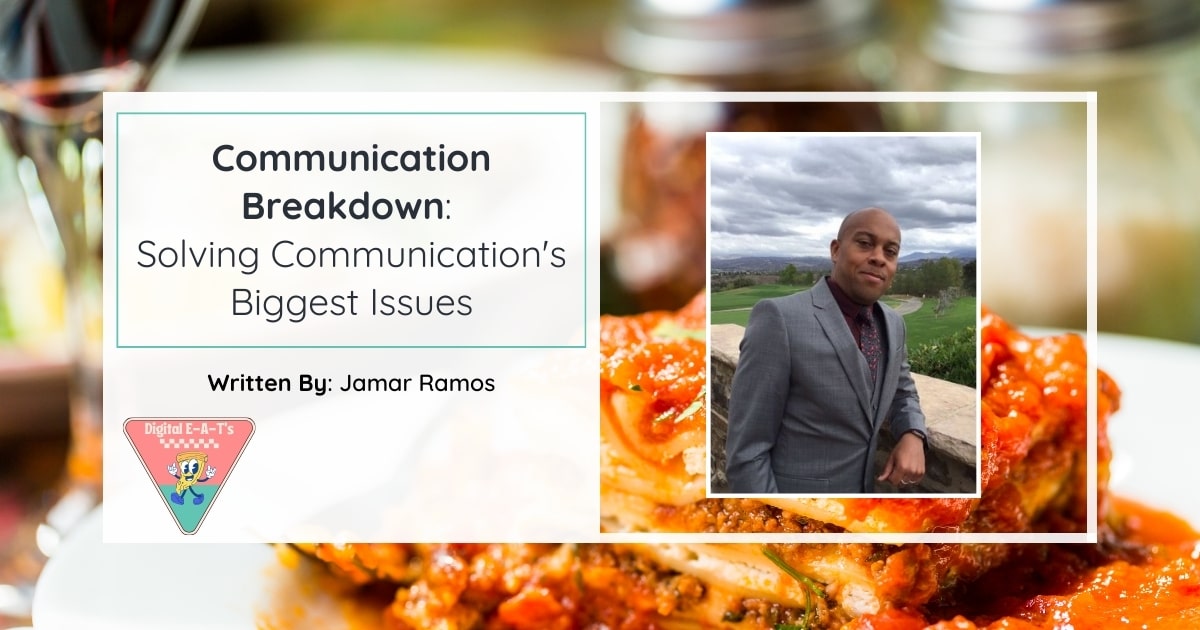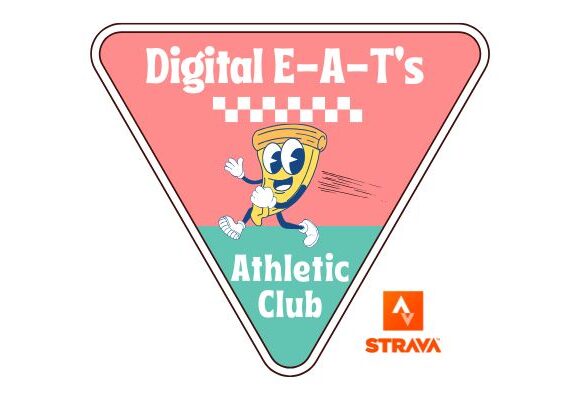Working Toward Alignment
- Written By - Jamar Ramos
- Content Process
- September 30, 2024
The phone call had me screaming “representative” repeatedly until I finally spoke with a real human being.
No, I wasn’t experiencing a medical emergency. I was trying to cancel my Xfinity Internet. Automated messages told me to call a different phone number to solve my issue, then hung up on me.
Xfinity didn’t equip the automated messages to solve my problem; it frustrated me. After yelling “representative” for what felt like five minutes, a human picked up my call…and I experienced even more frustration. While trying to cancel my Internet, the rep asked me multiple times if I knew a family member or friend to whom I wanted to transfer my account.
NO! I JUST WANT TO EFFING CANCEL MY DANG INTERNET!!!!
Ugh.
First, I experienced frustration with an automated system, then experienced more frustration with a human. All because Xfinity didn’t care about why I was canceling my service. The company only cared about 1) call efficiency, 2) employment costs, and 3) maintaining their payments.
The next time I need an Internet provider, I will find a carrier other than Xfinity.
If Xfinity trained their reps to focus on the why, on making a genuine connection with an unhappy customer, it wouldn’t have permanently lost a customer. Successful communication occurs when there’s an authentic connection between the speaker and the audience. This phenomenon, known as neural entrainment, is challenging to achieve.
To achieve neural entrainment, here’s the pillars we’ll focus on:
- Understanding Neural Entrainment
- Understanding Our Conversations
- Understanding Communication Types
- Understanding How To Match Different Communication Types
- Conclusion
Understanding Neural Entrainment
Neural entrainment happens when conversation members bond emotionally, physically, and chemically. Some might call it “clicking” with someone, others might call it “vibing,” and still others will say they are on the “same wavelength” as someone else.
In his book Supercommunicators, Charles Duhigg calls it “alignment,” which is how we’ll refer to it going forward.
No matter what we call it, the phenomenon is incredibly potent, as Stephanie Borrie explains in her TEDTalk “Entrainment and the dance of conversation”:
“[E]ntrainment…[is] actually a whole body event. We see it in a lot of our speech behaviors, things like the pitch of our voices, the intonation patterns that we use, the lengths of our speaking turns, the timings of our pauses, our laughter, but also in our body postures, gestures, facial expressions, eye contact. And conducting this whole orchestra is the neural firing of our brains. We quite literally become in sync with our conversational partner, engaging in this really beautiful conversational dance.”
So, now that we’ve agreed on a name, what benefits does alignment have for our communications?
Benefits of Achieving Alignment
In another article, “Communication Breakdown: Solving Communication’s Biggest Issues,” I wrote that “clear communication is not just a necessity; it’s a revenue booster. It increases employee happiness, internal and external trust, and, most importantly, your bottom line.”
Understanding and achieving alignment in our conversations can bring many benefits, inspiring us to enhance our communication skills.
Better Understanding
How many times have you said/thought to yourself, “They didn’t understand me”?
It’s not that they didn’t understand you; your conversation lacked alignment.
In “Conversational Alignment: A Study of Neural Coherence and Conversational Alignment: A Study of Neural Coherence and Speech Entrainment,” Kristen M. Jensen, Stephanie A. Borrie, Breanna E. Studenka, and Ronald B. Gillam write that “Cognitively, conversational alignment facilitates spoken message comprehension, enabling listeners to share mental models and generate temporal predictions about upcoming aspects of speech.”
In layperson’s terms, the more we sync with someone, the more we understand them.
Improved Communication Efficiency
When there is better understanding during a conversation, we can bypass most noise and misunderstandings, increasing communication efficiency.
Enhanced Message Effectiveness
Because you can match your receiver’s conversation type and cut through the noise to understand what your receiver needs from the conversation, you can also increase your ability to communicate your message effectively.
Increased Trust
When your receiver sees you matching their conversation type and that you’re listening and genuinely participating, they’ll trust you more.
Achieving alignment isn’t easy, however. It “requires understanding how communication functions—and, most importantly, recognizing that we need to be engaged in the same kind of conversation, at the same time, if we want to connect” (Charles Duhigg, Supercommunicators).
How do we engage in the same conversation? We must recognize that we could be engaged in one of three conversations.
Understanding Our Conversations

Achieving alignment is more than listening to someone speak and then replying to what they said. We can be involved in one of three possible conversations whenever we talk to someone. Much of our miscommunication happens when we’re having a different conversation than the person we’re conversing with. We end up talking past each other rather than speaking to each other.
What are the three conversation types?
The “What’s This Really About” Conversation?
When you’re participating in a “What’s This Really About” conversation, you’re participating in a negotiation around two goals: 1) what topics to discuss, and 2) how the conversation will unfold (including what rules and norms will govern our conversation, and how we’ll make decisions together).
These goals are easy in a corporate setting: the topics are outlined by your to-do list or meeting agendas, and professional etiquette governs your discussions.
A “What’s This Really About” Conversation Example:
The United States sent a basketball all-star team to the 1992 Olympics. Before that, only amateurs were allowed to play Olympic basketball. Once the world started improving at basketball and beating the US regularly, we decided, “Enough is enough.”
One big basketball player was left off the roster: Isaiah Thomas.
People believed that Michael Jordan pushed to keep Thomas off the roster. The media wanted answers, but Jordan clarified that if you wanted to interview him, there would be no questions about Thomas.
Jordan expressed what topics he was willing to discuss (anything but Thomas) and the rules governing the interviews (ask about Thomas, and we discontinue the interview).
The “How Do We Feel” Conversation?
“How Do We Feel” deals with emotional conversations. When we participate in a “How Do We Feel” conversation, we want to share our emotions and have that emotional sharing reciprocated.
Being vulnerable with a direct report, a boss, or a client might feel inappropriate. Yes, you shouldn’t be overly descriptive about your medical issues, but opening up can build trust.
Here’s an example to illustrate what I mean.
A “How Do We Feel” Conversation Example:
During a weekly 1-on-1 meeting, your boss mentions they’re worried about an upcoming meeting with their boss. Depending on how much work you have on your plate, you might initially want to ignore your boss’ emotional statement.
Don’t ignore it. This is your chance to build a stronger relationship with your boss by connecting with their emotions. The best way to do this is to ask questions:
- “What has you worried about the meeting?”
- “Do you have notes/a deck prepared?”
Using these moments of vulnerability is a sign of weakness and a powerful tool for building trust and connection. Duhigg says, “If we acknowledge someone else’s vulnerability, and become vulnerable in return, we build trust, understanding, and connection.”
The “Who Are We” Conversation?
I’m Black. My partner is mixed Japanese-Caucasian. I’m a Cowboys fan, and she’s a Niners fan. She graduated from UC Santa Barbara, and I graduated from San Francisco State University.
I’m a man, and she’s a woman.
When we have conversations, we bring those social identities’ biases, baggage, and experiences.
Social identities are, as described in “Social identity and intergroup relations,” “that part of our self-concept that comes from our membership in social groups, the value we place on this membership, and what it means to us emotionally.”
When our social identities align, communication is easy. When they don’t, communication is difficult.
Here’s an example of a “Who Are We” conversation.
A “Who Are We” Conversation Example:
I attended a country music concert in 2016. No, I don’t like country music. I did it for a friend’s birthday.
From the moment we parked, white country music fans and Confederate flags surrounded me. The Confederate flags made me quite uncomfortable.
We had lawn seats, so we found an empty patch of grass and sat down. After about 30 minutes, I saw three men walking our way: two white and one Black. As the three men approached, the Black man and I stuck out our arms and connected with a fist bump. The three men kept walking past us.
My friend looked at me and asked, “Did you know him.” I told her, “No, I didn’t.”
I didn’t know the Black man, but we recognized that our Blackness connected us.
Our first step in communication is to understand which conversation we’re having. Our next step is to understand which communication type we’re interacting with.
Understanding Communication Types
You should be aware of the four primary communication types. Your receiver is likely to fall into one of these types.

Driving-style receiver
A driving-style receiver is assertive. Drivers look to control any situation, meeting, or conversation they’re part of—not because of ego but because they are action-orientated. Drivers focus on completing tasks now and continue pushing toward a solution.
Because drivers like to move swiftly, their communication can be considered harsh, severe, and critical. These factors make drivers appear to have little concern for the feelings of others or personal relationships.
- Characteristics: Results-oriented, decisive, direct
- Strengths: Efficient, goal-focused, decisive leadership
- Challenges: May come off as abrasive or impatient
Analytical-style receiver
The analytical-style receiver focuses on gathering facts to understand situations fully. They are good at organizing and completing tasks methodically and will stick with tasks others might find boring. Because they prioritize facts and logical thinking, they can be slow to make decisions, needing to consider all possibilities first. For them, facts and principles are often more important than personal relationships or immediate satisfaction.
- Characteristics: Detail-oriented, organized, logical
- Strengths: Thorough, data-driven, organized
- Challenges: Can be perceived as overly critical or slow to make decisions
Expressive-style receiver
Expressives are people who are both assertive and responsive. They openly show their emotions and prioritize relationships over tasks. They are intuitive, often trusting their gut feelings. Known as “social specialists,” expressives are charismatic and enthusiastic, focusing on future dreams and visions. They can be seen as impractical and impulsive because they jump from one idea to another and may discard ideas quickly if they lose interest. Their imaginative and creative nature makes them exciting and fun, but they can also be wrong because they rely on intuition rather than facts. They get quickly bored with slow or unengaging presentations.
- Characteristics: Enthusiastic, outgoing, persuasive
- Strengths: Charismatic, motivating, good at building relationships
- Challenges: May be seen as overly emotional or disorganized
Amiable-style receiver
Amiable people are low in assertiveness but high in responsiveness. They express their feelings openly and focus on keeping harmony in relationships. Known as “support specialists,” Amiables blend a reserved nature with emotional expression.
Amiables care about personal worldviews and often focus on feelings and relationships, thinking about who did what to whom. Their willingness to conform makes them great team players striving to build and maintain group harmony. They are good at understanding what others are feeling. Amiables use diplomacy to sustain harmony and can advocate solutions well if there is trust. However, they are slow to change opinions that matter to them and prefer familiar situations over risky decisions.
- Characteristics: Supportive, empathetic, cooperative
- Strengths: Great team players, good listeners, harmonious
- Challenges: Can be seen as indecisive or overly accommodating
Consider your personal and professional conversations if you want to know your communication style.
You might be a Driver if:
- You tend to be direct and to the point
- You’re focused on results and efficiency
- You make decisions quickly
- You’re comfortable taking charge in conversations
You might be an Expressive if:
- You’re enthusiastic and animated when communicating
- You enjoy social interactions and storytelling
- You’re comfortable with attention and speaking in front of groups
- You tend to make decisions based on intuition or feelings
You might be an Amiable if:
- You prioritize harmony and avoiding conflict
- You’re patient and a good listener
- You prefer to build consensus before making decisions
- You’re more comfortable in one-on-one or small-group settings
You might be an Analytical if:
- You focus on details and facts
- You’re methodical in your approach to problems and decisions
- You prefer to have all the information before speaking or acting
- You’re more reserved in your emotional expressions
Now that we know more about each communication style and which one we use, we’re ready to match it to how the receiver will, for lack of a better word, receive it.
Understanding How to Match Different Communication Styles
Matching with another communication style is a “meet me halfway” situation. We should understand each other’s communication styles and work on mitigating any issues stylistic differences or similarities can bring.
Here are some of the challenges different styles may encounter and some strategies for handling them.
Driver with Driver
- Challenges: Power struggles, impatience, and the potential for conflict due to being assertive and goal-oriented.
- Strategies: Establish clear roles and responsibilities, focus on mutual goals, and practice active listening to ensure both parties feel heard.
Driver with Analytical
- Challenges: Different pacing and priorities.
- Strategies: Focus on facts and data, and be clear and concise.
Driver with Expressive
- Challenges: Potential for conflict due to different priorities.
- Strategies: Keep discussions goal-oriented but allow for creativity and enthusiasm.
Driver with Amiable
- Challenges: Differences in decision-making speed and assertiveness.
- Strategies: Be patient, show appreciation, and build rapport.
Analytical with Analytical
- Challenges: Overemphasis on details, potential for analysis paralysis, and slow decision-making.
- Strategies: Set clear deadlines, focus on critical points, and encourage decision-making based on the available data.
Analytical with Expressive
- Challenges: Different focus areas; logic vs. emotion.
- Strategies: Balance data with emotional appeal, and provide structured discussions.
Analytical with Amiable
- Challenges: Differing approaches to problem-solving and communication speed.
- Strategies: Provide detailed information and be supportive and patient.
Amiable with Expressive
- Challenges: Potential for lack of focus on goals, as both may prioritize relationship-building over task completion.
- Strategies: Encourage brainstorming, build strong relationships, keep enthusiasm high, and set clear, achievable goals.
Amiable with Amiable
- Challenges: Indecisiveness and over-accommodation leading to a need for more progress.
- Strategies: Encourage assertiveness, set clear goals and timelines, and foster an environment where both feel comfortable expressing their opinions and making decisions.
Conclusion
“…on the surface, conversation is seemingly simple. There are two roles – talking, listening – and we take turns playing those roles as the message is being exchanged. But if we are to answer that question of what makes the exchange feel good, we have to look well beyond the simple notion of turn-taking and talker/listener roles. We have to define the aspects of conversation that allow us to feel a sense of mutual connection, a sense of ease in solving problems and working through ideas together, a feeling of pleasure and a genuine desire to continue that conversation. That’s where this really beautiful thing called entrainment comes in.” Stephanie Borrie, “Entrainment and the dance of conversation”
Like switching from a linear communication model to an interactive one, achieving alignment takes work, focus, and care. We must be willing to practice active listening, effective questioning, constructive feedback, self-awareness, and maneuver through the Three Conversations to achieve it fully.
The benefits are worth the work. Conversations become easier, communication becomes more effective, and trust is built quicker, creating a smoother work environment.
Written By

Jamar Ramos
Jamar Ramos is a multichannel digital marketer currently doing part time consulting for start ups. In this role I help new companies build a solid digital marketing foundation, then layer on multi-channel initiatives to add several touchpoints to their customer experience. I’ve been working in the field for eleven years.
Articles

5 Unpopular B2B SaaS Content Strategies That Drive More Product Signups
5 Unpopular B2B SaaS Content Strategies That Drive More Product Signups. Learn more from Deborah Damilola!

Hey SEO’s — Everybody Love Everybody
SEO’s and digital marketers need to build each other up instead of breaking eachother down! The purpose of Digital E-A-T’s!

Stress and Stressability Working on Emotional Regulation
Emotional regulation issues start with emotional triggers. Let’s dig into some of the emotional triggers we encounter in digital marketing.

Communication Breakdown: Solving Communication’s Biggest Issues
Miscommunication impacts trust, efficiency, and revenue. Why are we so bad at it if communication is essential and poor communication so costly? Learn more from Jamar Ramos!

Millennium Man: What Chris Jericho’s WWE Debut Teaches Us About Marketing
Let’s look at how WWE’s marketing machine went into overdrive for Chris Jericho.

